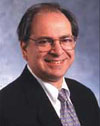Issue Archive
Editor’s Wrapup: Mean Streets
 Tel Aviv isn’t the kind of city you usually see in noirish films about the seamy side of life. Its beaches and cafés are more the stuff of humorous banter than of mystery, and even the cops who patrol the streets are as likely to be called on to calm unruly yeshiva students as they are to address more serious crimes.
Tel Aviv isn’t the kind of city you usually see in noirish films about the seamy side of life. Its beaches and cafés are more the stuff of humorous banter than of mystery, and even the cops who patrol the streets are as likely to be called on to calm unruly yeshiva students as they are to address more serious crimes.
But there’s no denying that as a big city Tel Aviv has arrived, and that its police officers see a side of Israeli society that runs against common conception. Charlotte Hallé spent a night on the street with Tel Aviv’s finest and describes the city through their eyes (Feature – T.A.P.D. Blue & White).
One thing that Israel’s police do not have to think about is how the streets and towns they patrol got their names. But as Aryeh Dean Cohen explains (Israeli Life), sometimes the naming process can get so heated you wonder if calling the cops might be necessary. One recent battle in Jerusalem—prompted by the last four years of violence—involved proposals to change the name of Gaza Street. In a small country with a long history, there seems to be 10 potential arguments involving history, politics and religion for every dot on the map that needs a name.
Some streets become frozen in history. In Frankfurt’s Jewish Museum, visitors can marvel at the wooden scale model of the Judengasse, the main street of the city’s old ghetto, as it looked in 1711. Not far away, they can visit the actual street (now called Börneplatz) and find artifacts from excavations on the site of the ghetto. If the Jewish patrimony of Frankfurt fascinates the average tourist, it was even more personal for Lois Gilman, a New York writer whose ancestors lived in the ghetto during the period portrayed in the model. Her travel column on Jewish Frankfurt can be read in this month’s The Jewish Traveler.
The Judengasse isn’t as mean as it once was, but it is a place of noirish nostalgia.










 Facebook
Facebook Instagram
Instagram Twitter
Twitter
Leave a Reply